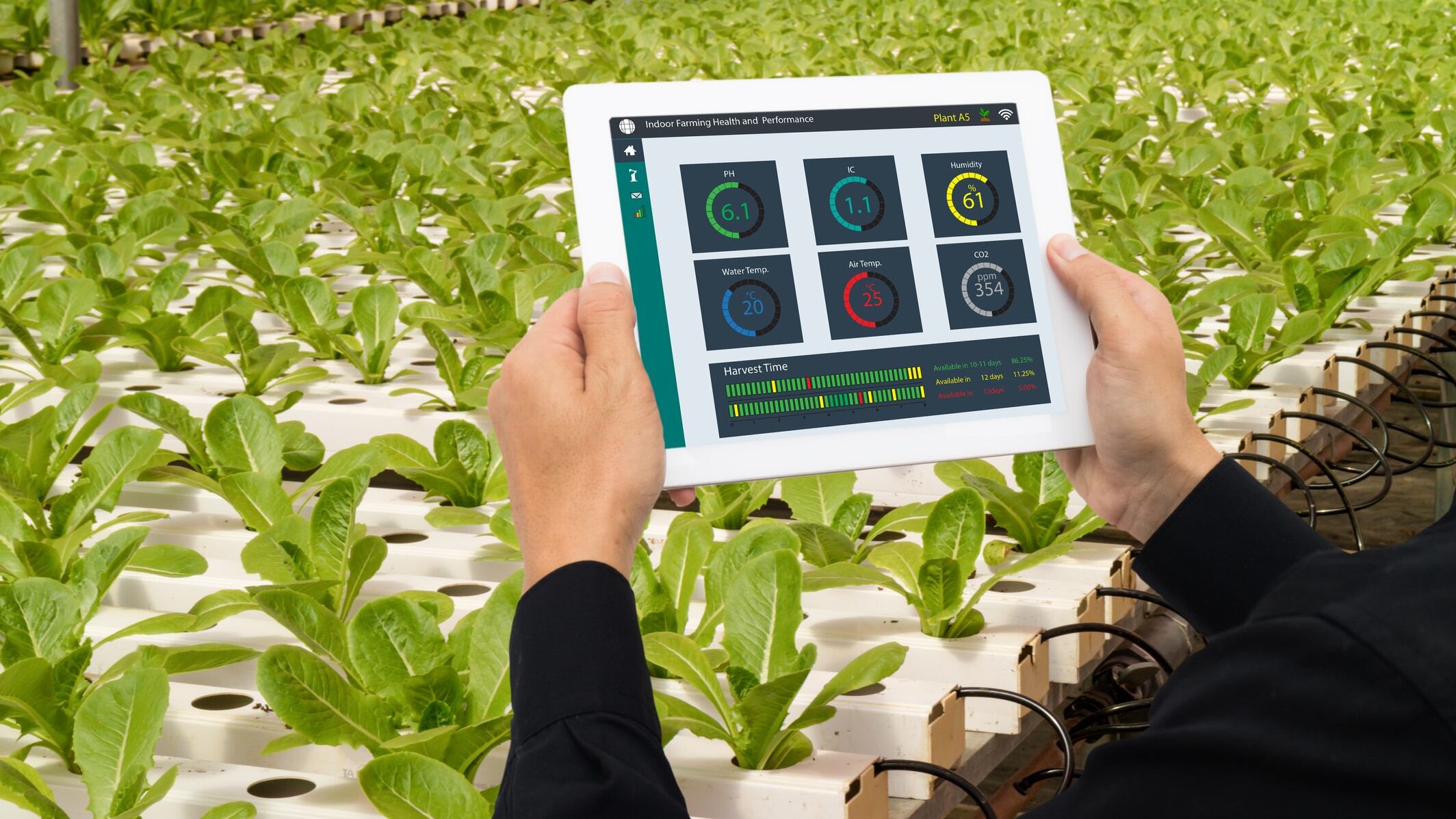Global plant-based food production has been identified as a substantial contributor to greenhouse gas emissions, prompting the exploration of alternative approaches to urban agriculture. In a bid to tackle challenges surrounding environmental sustainability and food security, indoor vertical farms (IVFs) have emerged as a ground-breaking solution.
These innovative farming facilities, often located within urban environments, are designed to transform food production and consumption while significantly reducing the environmental impact of traditional farming methods.
Crops are traditionally grown on expansive horizontal fields, subject to unpredictable weather patterns and intensive pesticide, herbicide and water use. In contrast, IVFs use advanced hydroponic or aeroponic systems, cultivating crops in stacked layers and as such, optimally utilising space and resources.
This vertically layered setup, often augmented by LED lighting systems tailored to specific plant needs, significantly reduces energy consumption. At the same time, recirculation systems that deliver nutrients directly to plants' roots lower water usage, allowing IVFs to alleviate the strain on natural resources while catering to a growing global population.
By eliminating the need for vast expanses of land, IVFs curtail deforestation and habitat destruction while drastically reducing the need for chemical pesticides and fertilisers, thus alleviating soil and water pollution concerns.
Their suitability to urban environments also means closer proximity to consumers, substantially shortening the farm-to-table journey and translating to fresher produce with reduced transportation emissions. This shift towards localised agriculture has the potential to mitigate the carbon footprint associated with long-haul food transport.
Despite these advantages, however, IVFs’ environmental implications remain poorly understood, particularly concerning operational choices that influence greenhouse gas emissions.
Additionally, initial setup costs for vertical farms can be substantial and technical expertise is required to manage their intricate systems. The scalability of these farms to meet broader agricultural demands also warrants consideration.
Operational conditions’ impact on urban food production
A study by researchers at Universidade de Lisboa and the University of Bologna conducted a comprehensive life cycle assessment (LCA) of a building-integrated IVF system, shedding light on the significant impact of operational conditions on its environmental performance.
Focusing on microgreen production using an IVF system, the researchers sought to uncover the optimal conditions that could minimise greenhouse gas emissions associated with IVFs, while also maximising crop yield.
The LCA approach the study used combined a process-based plant growth model with a mass balance model for air and heat exchange within the chamber. This enabled the evaluation of a wide range of operational parameters — including air temperature, CO2 concentration and photoperiod — to determine their effects on both crop yield and environmental impact.
The study then identified a range of greenhouse gas emissions per kilogramme of microgreens produced, spanning from 3.3kg to 63.3kg CO2 equivalent per kilogramme.
The optimal conditions for minimising greenhouse gas emissions were pinpointed at an air temperature of 20℃, maximum CO2 concentration within the chamber and the longest possible photoperiod. These conditions led to a notable reduction in emissions to 3.3 kg CO2 equivalent per kilogramme and maximised microgreen production to 290.5kg of fresh weight per week.
The results indicated that the greenhouse gas emissions associated with IVFs could vary significantly based on operational conditions, and highlighted the critical role operational decisions, resource consumption and yield could play in lowering IVFs’ environmental impact. It also pointed to the potential of adjusting growing conditions as a key strategy to enhance sustainability in urban food production.
Ground-breaking research
In addition to its findings regarding operational conditions’ influence on IVFs, the research demonstrated that intensifying production could lead to lower environmental impact. The study attributed this to the disproportionately larger increase in yield compared to the marginal rise in impact, underscoring the importance of aligning resource consumption with crop yield to minimise IVFs’ ecological footprint.
The researchers stated that the study was “the first of its kind” and broke “new ground by evaluating the optimal settings for managing IVFs to minimise emissions while maximising food production”. They further said it shed light on “the potential of intensive production as a win-win strategy for both environmental sustainability and economic viability”.
The study's findings are expected to inform future research efforts and guide the development of more sustainable urban agriculture practices. As the world grapples with the dual challenges of food security and climate change, innovative solutions like optimised IVF systems could play a crucial role in shaping the future of food production.
Source: National Center for Biotechnology Information
“Life cycle assessment of microgreen production: effects of indoor vertical farm management on yield and environmental performance”
https://doi.org/10.1038/s41598-023-38325-0
Authors: Michael G Parkes, et al.




